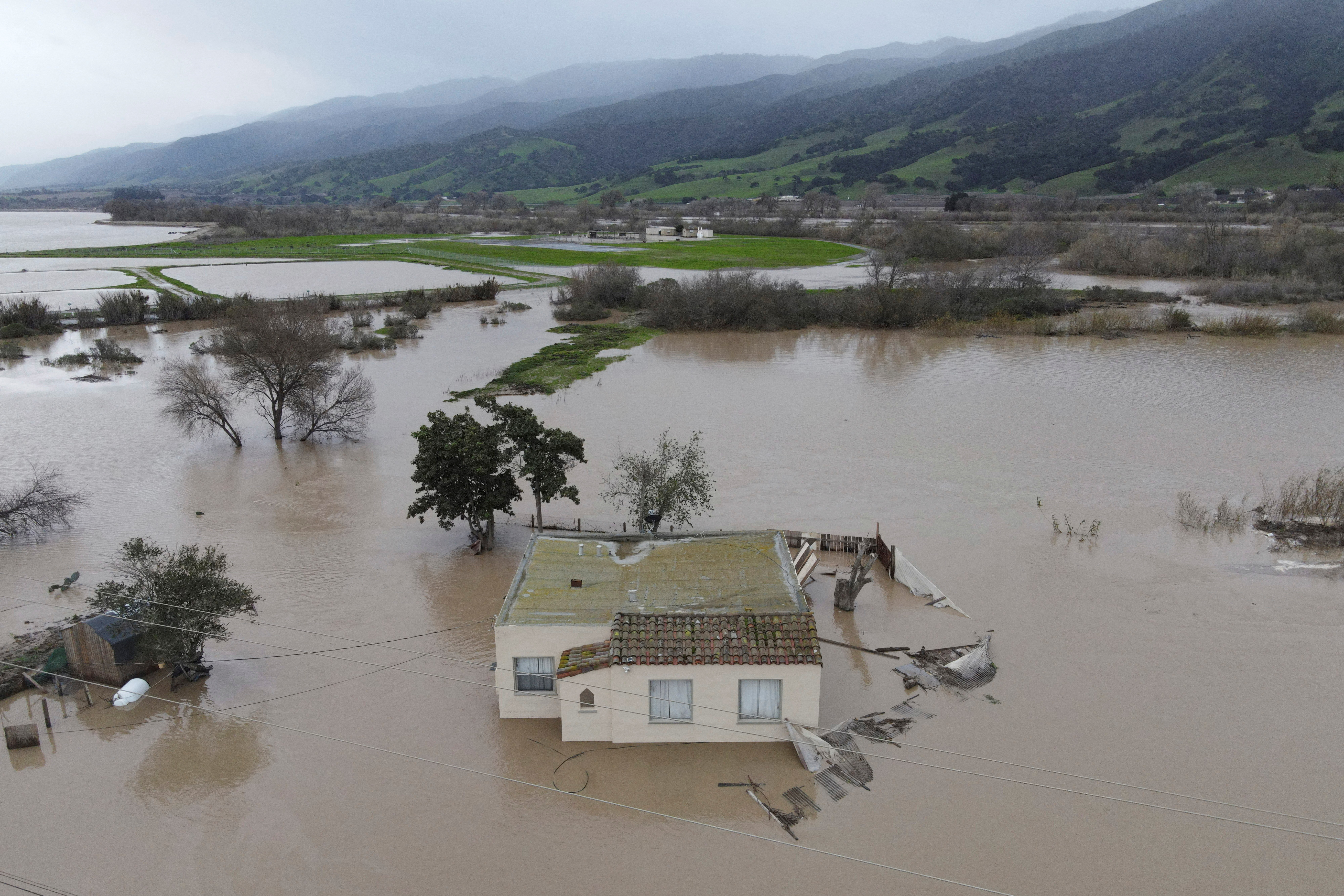
A series of storms called “atmospheric rivers” that pummelled California and caused flooding and devastation across the United States’s west coast has helped to boost the state’s water supply after years of withering drought.
As of Thursday, the US Drought Monitor showed that the state no longer had any areas under “extreme” or “exceptional” drought. Three months ago, about 43 percent of the state fell under those categories.
“We are pleased that we can increase the allocation now and provide more water to local water agencies,” said Karla Nemeth, director of the state Department of Water Resources.
“These storms made clear the importance of our efforts to modernise our existing water infrastructure for an era of intensified drought and flood.”
A positive result from the rain earlier this month: the most recent drought monitor shows steady improvement (left) compared to what it was just three months ago (right).#CAwx #CAdrought pic.twitter.com/YBgArRCvSn
— NWS Bay Area 🌉 (@NWSBayArea) January 26, 2023
California’s historically vexed relationship with water access is unlikely to go away any time soon, as climate change makes higher temperatures and longer droughts in the region a persistent reality.
According to the drought monitor, more than 99 percent of the state remains under conditions ranging from “abnormally dry” to “moderate” or “severe” drought.
Several weeks of rainfall drenched California with an estimated 121 trillion litres (32 trillion gallons) of water, causing water storage in the state’s two largest reservoirs to increase by a combined 66 percent.
In December, before the storms, the state had announced that local water agencies would receive just five percent of what they had requested from the reservoirs, as drought conditions brought water levels to perilous lows.
But after nine “atmospheric rivers” rolled over the state in less than a month, public agencies estimate 27 million people will receive more water than they were scheduled to receive one month ago.
Those numbers do not account for more water that could come as a result of snowmelt in the Sierra Nevada mountains. Earlier this week, the snow on California’s mountains was more than twice the historical average.
In the state’s Central Valley, home to many of California’s most productive agricultural regions, the storms have brought welcome relief.
The San Joaquin Valley, for example, dropped from “severe drought” to “moderate drought”, and the Central Coast region went from “moderate drought” to “abnormal dryness”.
But officials and experts have warned that the much-needed relief brought by the storms will not be enough to end long-term challenges exacerbated by the climate crisis.
“The California system was built for a climate we don’t have any more,” said Laura Feinstein, who leads work on climate resilience and environment at San Francisco Bay Area Planning and Urban Research Association, a public policy non-profit.
“We are not out of the drought yet.”







